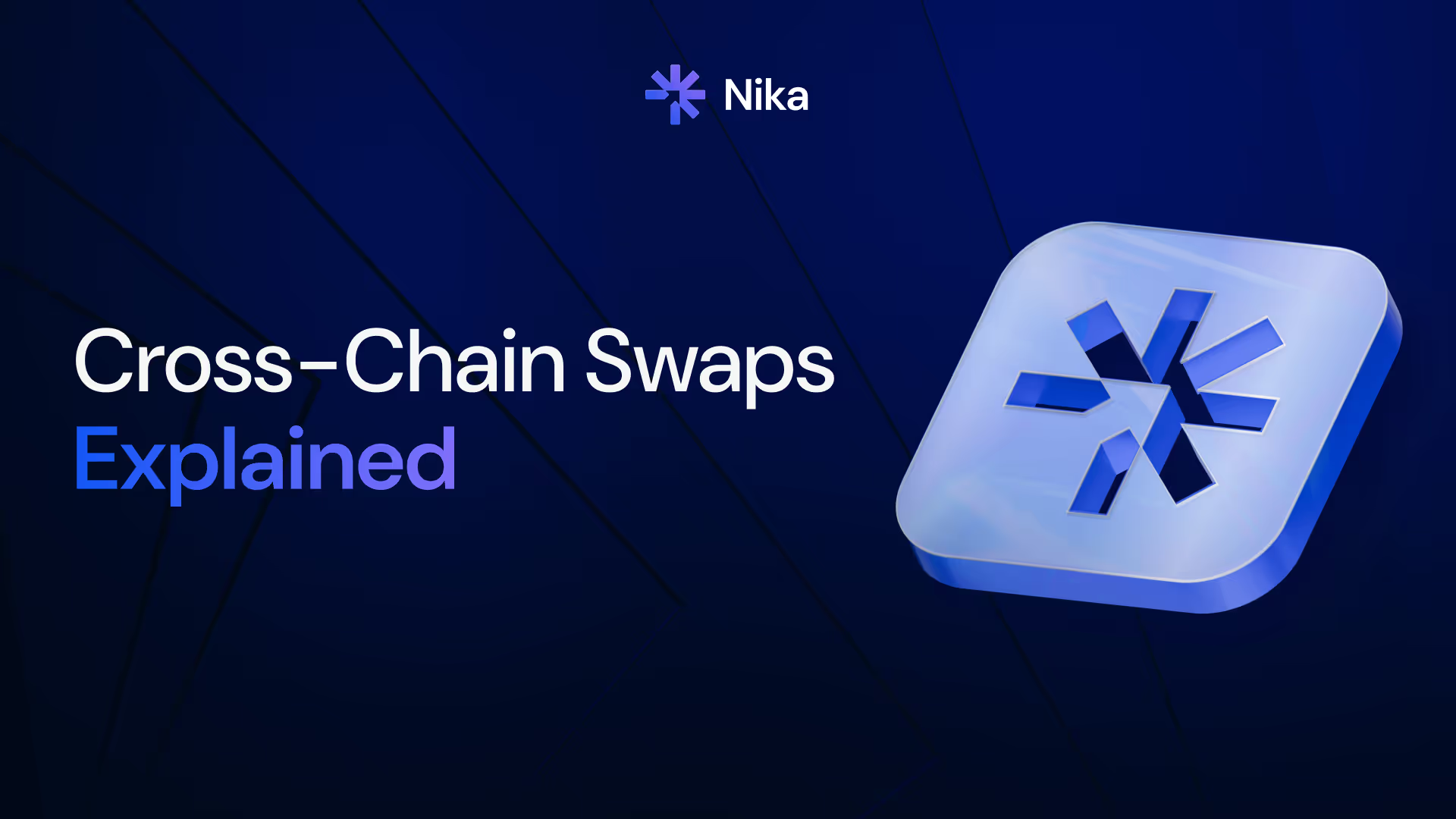Cross-Chain Swaps Explained: The Complete Guide

As decentralized finance (DeFi) continues to evolve, cross-chain swaps have become a crucial tool for investors. They allow you to move assets between different blockchain networks, unlocking new trading, yield farming, and portfolio diversification opportunities. However, the process can feel complicated, especially for newcomers.
This guide explains what cross-chain swaps are, why they matter, and how Nika makes the entire process seamless, so you can focus on trading and portfolio growth without worrying about blockchain complexities.
What Are Cross-Chain Swaps?
A cross-chain swap is the exchange of tokens between two separate blockchains. For example, you might want to trade Ethereum (ETH) for a token on Solana or move assets from Arbitrum to Binance Smart Chain. Traditionally, this requires multiple steps: using bridges, wrapping tokens, and interacting with several protocols—each step introducing potential risk.
Cross-chain swaps offer:
- Portfolio diversification: Access tokens and DeFi opportunities across multiple chains.
- Yield optimization: Participate in staking, liquidity provision, and yield farming on various networks.
- Seamless trading: Execute trades without manually bridging tokens or managing multiple wallets.
How Cross-Chain Swaps Work
Technically, cross-chain swaps use smart contracts, bridges, and liquidity pools. When you initiate a swap, the platform locks your token on the source chain and releases an equivalent token on the target chain. While this is simple in theory, it often involves several steps and interactions, each with potential security and fee considerations.
Challenges include:
- Complex execution: Users must understand bridges and token wrapping.
- High network fees: Multiple transactions can increase costs.
- Security risks: Each bridge and smart contract has its own vulnerabilities.
Why Cross-Chain Swaps Matter
Cross-chain swaps are vital for DeFi investors who want:
- Multi-chain liquidity access: Trade wherever the best opportunities exist.
- Efficient portfolio management: Rebalance and diversify holdings across Ethereum, Solana, Arbitrum, and more.
- Advanced trading strategies: Tap into yield products, NFTs, and specialized tokens without restrictions.
However, these benefits often come at the cost of complexity and risk—unless you use a platform designed to simplify the process.
Nika Makes Cross-Chain Trading Effortless
With Nika, you never have to worry about bridges, token wrapping, or managing multiple wallets. Nika handles all the blockchain complexities behind the scenes, allowing you to focus solely on trading and growing your portfolio.
Here’s what makes Nika stand out for cross-chain swaps:
- Seamless multi-chain access: Trade assets across Ethereum, Solana, Arbitrum, and more without manual swaps.
- Unified portfolio management: All your assets are visible in one app, regardless of which chain they reside on.
- Built-in security and guidance: Institutional-grade security combined with AI-driven insights keeps your trades safe and efficient.
By removing technical barriers, Nika transforms cross-chain trading from a complicated, high-risk process into a simple, intuitive experience.
Best Practices for Safe Cross-Chain Trading
Even with Nika handling the mechanics, understanding some best practices can enhance safety and performance:
1. Track your portfolio: Regularly review allocations to maintain balance.
2. Leverage AI guidance: Use real-time insights to optimize trades and minimize risk.
3. Diversify across chains: Spread assets to manage volatility.
4. Monitor network activity: Stay aware of fees and transaction congestion.
Nika incorporates these best practices automatically, letting you trade efficiently while minimizing risk.
Conclusion
Cross-chain swaps open the door to multi-chain trading, diversification, and advanced DeFi strategies. Yet, complexity and risk often prevent investors from taking full advantage.
With Nika, all these obstacles disappear. Nika handles cross-chain mechanics, security, and portfolio tracking, allowing you to trade seamlessly across Ethereum, Solana, Arbitrum, and beyond. You can focus entirely on building your portfolio, earning yield, and maximizing opportunities—without ever worrying about blockchain complexities.
Nika doesn’t just make cross-chain swaps easier—it makes them effortless.








.svg)
%20(1).avif)